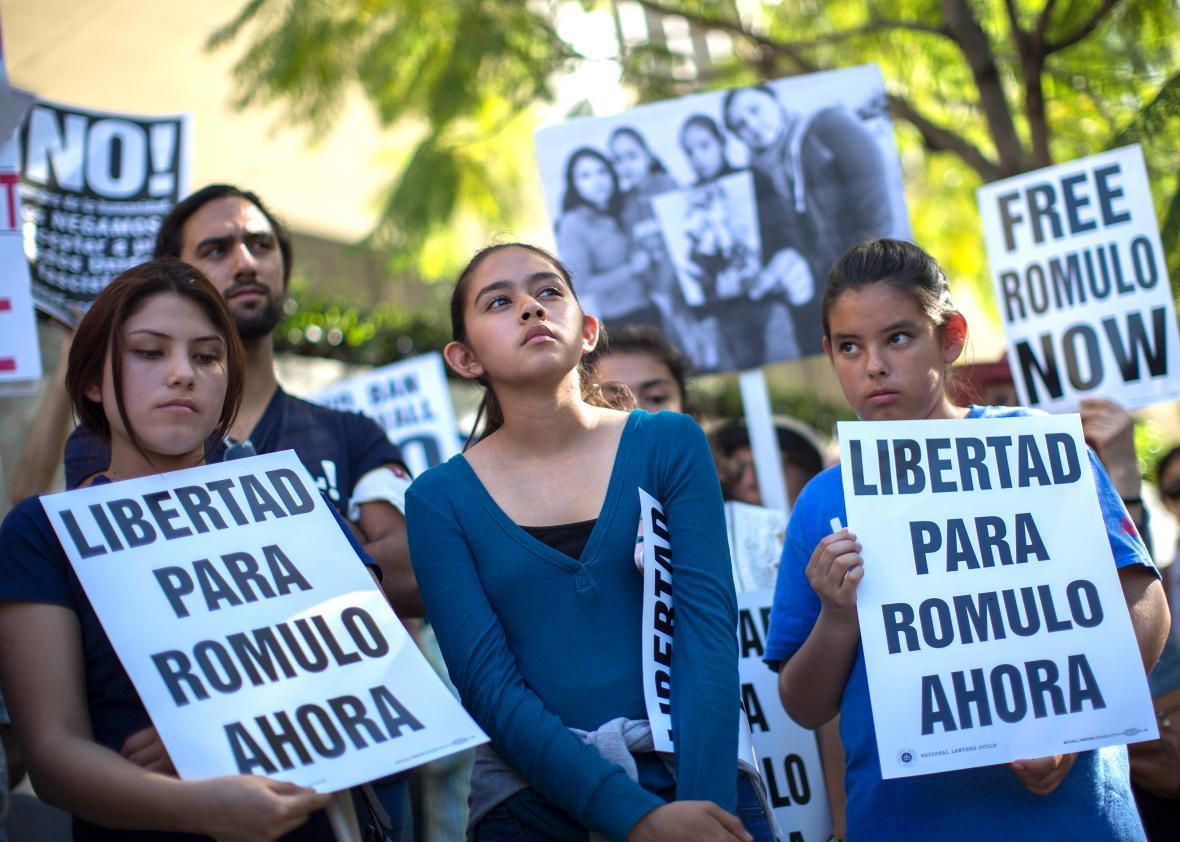In Sioux County, Iowa, a Guatemalan citizen had been charged with a traffic offense.
In Denver, a Mexican citizen had a conviction for marijuana possession on his record.
In Brooklyn, police booked a French citizen who had been charged with assault.
Over two weeks in late January and early February, the Department of Homeland Security asked local police departments to hold each of them without a warrant, and in each case, the request was declined. Once their criminal cases were resolved, they were free to go.
Their cases are among the 253 instances between Jan. 28 and Feb. 10 in which DHS learned that cities and counties had declined to detain individuals for Immigration and Customs Enforcement police without a warrant. They’ve been collected in the Trump administration’s first two Declined Detainer Outcome Reports, which were released in late March and offer an early glimpse of how the rhetorical war between cities and the Trump administration over immigration policing is playing out in local jails.
On Jan. 25, Trump signed an executive order to reinstate a program called Secure Communities, through which DHS asks jails to hold individuals suspected of violating immigration law. Jurisdictions that refused—so-called sanctuary cities—would be punished with the loss of federal funds. To convince the public of the danger of sanctuary cities, Trump ordered DHS to publish a weekly “comprehensive list of criminal actions committed by aliens” whose detainer requests were not complied with.
Two months later, much of Trump’s sanctuary city order remains muddled. Sanctuary jurisdictions have yet to see their funding cut off. Attorney General Jeff Sessions has pledged that a crackdown is coming, though many legal scholars don’t think he has the legal authority to undertake one. Meanwhile, San Francisco and Seattle have both sued the administration, setting up a long fight over federalism and the language of immigration law.
But the weekly list, the Declined Detainer Outcome Report, has arrived. For the first time, it shows when and where DHS learned its detainers—many of which date from the Obama administration—have been declined on a weekly basis, along with the most serious incident of criminal activity from the record of each arrested individual.
“The charges and convictions against these aliens include drug trafficking, hit and run, rape, sex offenses against a child and even murder,” Sessions said on Monday. “Such policies cannot continue. They make our nation less safe by putting dangerous criminals back on our streets.”
Among the 253 declined detainers were one individual who had previously been charged with homicide, one with a charge of drug trafficking, and one with a conviction for rape.
There are several convictions for assault, a handful for burglary and for domestic violence. But there are also dozens for low-level offenses like marijuana possession, driving under the influence, and traffic violations. No dates are given for the convictions. And of the 253 declined detainers, 146 were for individuals who had only been charged with a crime, but not, apparently, convicted. That runs counter to Sessions statement on Thursday that ICE was “not focusing” on arresting undocumented immigrants who had not committed a crime.
The report does not give more details of their cases, and an ICE representative couldn’t say whether they were acquitted, had charges dropped, are awaiting trial, or had been convicted of lesser offenses. We also don’t know when the charges were issued.
The data seems to indicate that most people released by county jails despite ICE detainer requests have not been convicted of any crime, let alone a violent offense.
The reports will also function as a kind of score sheet for noncompliance between localities and federal immigration police. Near its peak, in 2013, S-Comm—the program that asks police to hold individuals for ICE—was the primary reason that local law enforcement initiated more than half of the country’s nonborder deportations. But then three things happened more or less simultaneously: The Obama administration revised its priorities for deportation, Secure Communities ended, and the sanctuary city movement emerged. Deportations dropped to a 10-year low, but it wasn’t clear to what extent the sanctuary movement had served as a bulwark.
Left-wing critics argue that sanctuary cities don’t really protect undocumented residents the way mayors claim they do, and offer a “false sense of security.” Even in jurisdictions like California that generally don’t comply with detainer requests, federal ICE police can stake out courthouses and other public places, a practice that provoked a concerned response from Tani Cantil-Sakauye, the state’s chief justice, earlier this month.
And yet, local law enforcement was once the largest contributor to the deportation pipeline—and could be again. In the two-week period of January and February, DHS issued 162 detainers to Los Angeles, 105 detainers to Clark County, Nevada, home of Las Vegas, and 73 to New York City—non-compliant jurisdictions whose rejected detainers, on their own, would surpass DHS weekly count for the entire country for that time period. And ICE’s current pace still lags behind the Obama years. The department says it will pick it up as sanctuary cities—including Los Angeles, New York, and Chicago, which house several million undocumented immigrants between them—are again hit with detainers after years of federal disinterest.
